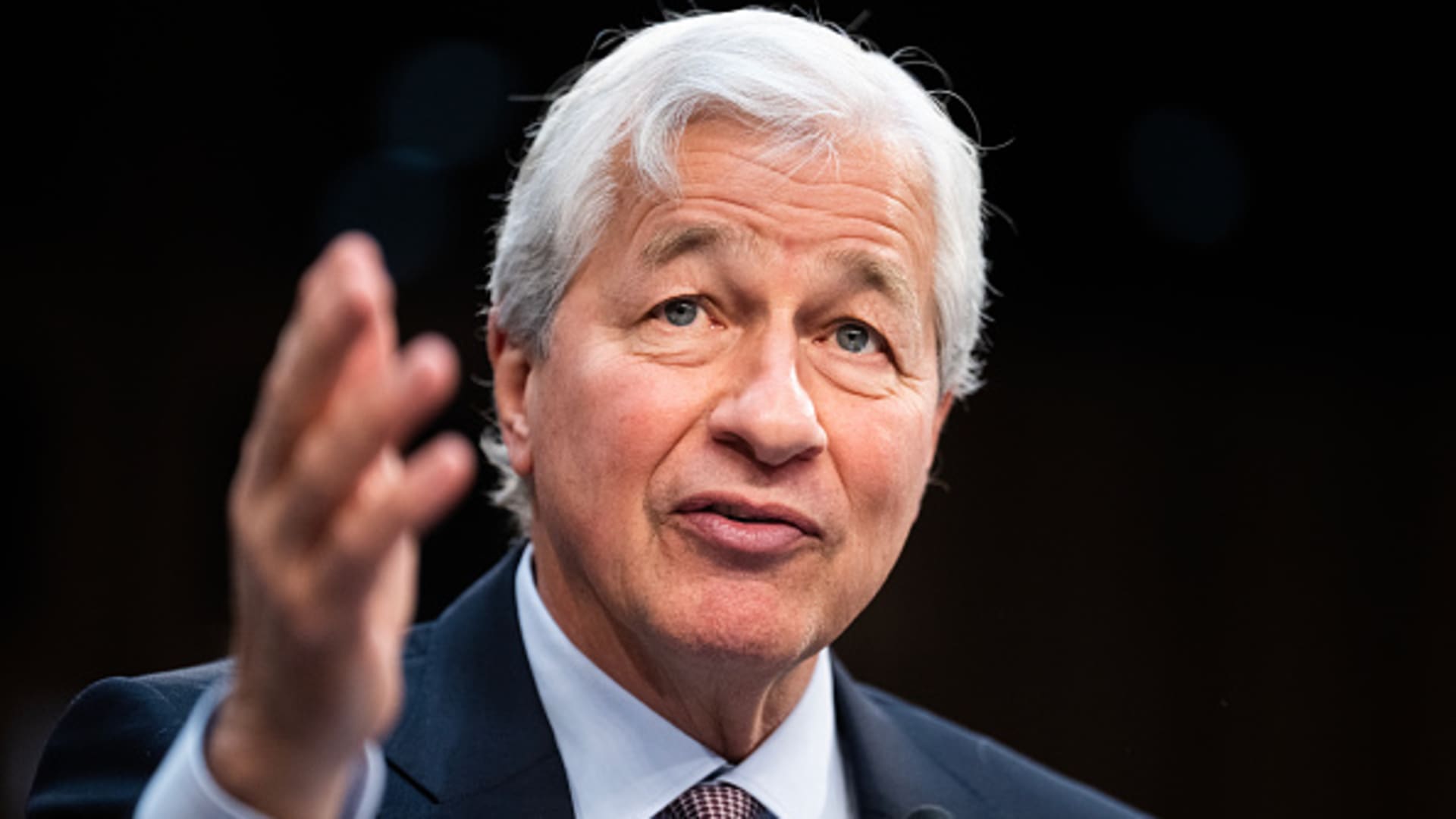
Jamie Dimon, CEO of JPMorgan Chase, testifies during the Senate Banking, Housing and Urban Affairs Committee hearing titled Annual Oversight of Wall Street Firms, in the Hart Building on Dec. 6, 2023.
Tom Williams | Cq-roll Call, Inc. | Getty Images
JPMorgan Chase said Friday that fourth quarter profit declined after paying a $2.9 billion fee tied to the government seizures of failed regional banks last year.
Here’s what the company reported vs. what analysts surveyed by LSEG, formerly known as Refinitiv, expected:
- Earnings per share: $3.04, may not compare with expected $3.32
- Revenue: $39.94 billion, vs. expected $39.78 billion
The bank said earnings slipped 15% to $9.31 billion, or $3.04 per share, from a year earlier. Excluding the regulatory fee tied to the regional banking crisis and $743 million in investment losses, earnings would have been $3.97 per share, according to JPMorgan.
Revenue climbed 12% to $39.94 billion, edging out analysts’ expectations.
JPMorgan CEO Jamie Dimon said full-year 2023 results hit a record because the largest U.S. bank by assets performed better than expected on net interest income and credit quality. Just as it did in the 2008 financial crisis, JPMorgan emerged larger and more profitable from last year’s regional banking chaos after acquiring First Republic, a midsized lender to wealthy coastal families.
Despite his bank’s performance, Dimon struck a cautious note on the American economy.
“The U.S. economy continues to be resilient, with consumers still spending, and markets currently expect a soft landing,” Dimon said in the release.
However, deficit spending and supply chain adjustments “may lead inflation to be stickier and rates to be higher than markets expect,” he said. Risks to markets and economies include central banks’ steps to rein in support programs and wars in Ukraine and the Middle East, he added.
“These significant and somewhat unprecedented forces cause us to remain cautious,” he said.
While the biggest U.S. bank by assets has navigated the rate environment capably since the Federal Reserve began raising rates in early 2022, smaller peers have seen their profits squeezed.
The industry has been forced to pay up for deposits as customers shift cash into higher-yielding instruments, squeezing margins. At the same time, rising yields mean the bonds owned by banks fell in value, creating unrealized losses that pressure capital levels.
Concern is also mounting over rising losses from commercial loans, especially office building debt, and higher defaults on credit cards.
Beyond guidance on net interest income and loan losses for this year, analysts will want to hear what Dimon has to say about the economy and banks’ efforts to tone down coming increases in capital requirements.
Wall Street may provide some help this quarter, with investment banking revenue higher than a year earlier, while trading may be “flattish,” JPMorgan said last month at a conference.
Beaten-down shares of banks recovered in November on expectations that the Fed had successfully managed inflation and could cut rates this year.
Shares of JPMorgan jumped 27% last year, the best showing among big bank peers and outperforming the 5% decline of the KBW Bank Index.
This story is developing. Please check back for updates.
Read More: World News | Entertainment News | Celeb News
CNBC









